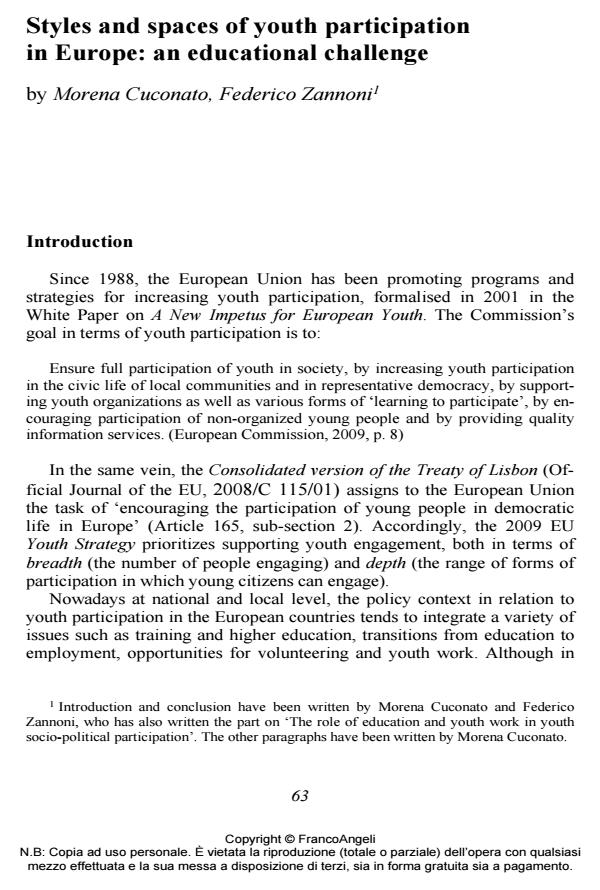Styles and spaces of youth participation in Europe: an educational challenge
Titolo Rivista EDUCATIONAL REFLECTIVE PRACTICES
Autori/Curatori Morena Cuconato, Federico Zannoni
Anno di pubblicazione 2017 Fascicolo 2017/1
Lingua Inglese Numero pagine 17 P. 63-79 Dimensione file 208 KB
DOI 10.3280/ERP2017-001005
Il DOI è il codice a barre della proprietà intellettuale: per saperne di più
clicca qui
Qui sotto puoi vedere in anteprima la prima pagina di questo articolo.
Se questo articolo ti interessa, lo puoi acquistare (e scaricare in formato pdf) seguendo le facili indicazioni per acquistare il download credit. Acquista Download Credits per scaricare questo Articolo in formato PDF

FrancoAngeli è membro della Publishers International Linking Association, Inc (PILA)associazione indipendente e non profit per facilitare (attraverso i servizi tecnologici implementati da CrossRef.org) l’accesso degli studiosi ai contenuti digitali nelle pubblicazioni professionali e scientifiche
The increasing electoral abstention and the crisis of the identification with traditional political parties are a clear sign of youth participation’s decline in the conventional forms of politics. Nevertheless, alternative styles of engagement are growing among the younger generations in the European countries. These new forms of participation, which could be located on the border between the public and private space, express anyway the desire of a more direct democracy. This article, based on the intermediate findings of the European project Spaces and Styles of Participation, aims to analyze the different ways in which young people (15-30 years old) participate in the decisions concerning them and the life of their communities in eight countries: Bulgaria, France, Germany, Italy, Sweden, Switzerland, Turkey and the United Kingdom with a special focus on the educational debate on this topic.
Morena Cuconato, Federico Zannoni, Styles and spaces of youth participation in Europe: an educational challenge in "EDUCATIONAL REFLECTIVE PRACTICES" 1/2017, pp 63-79, DOI: 10.3280/ERP2017-001005